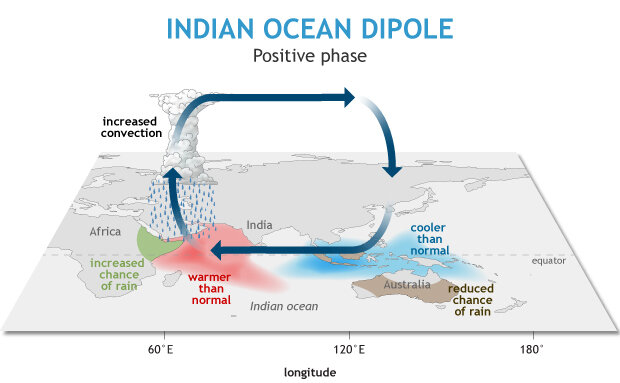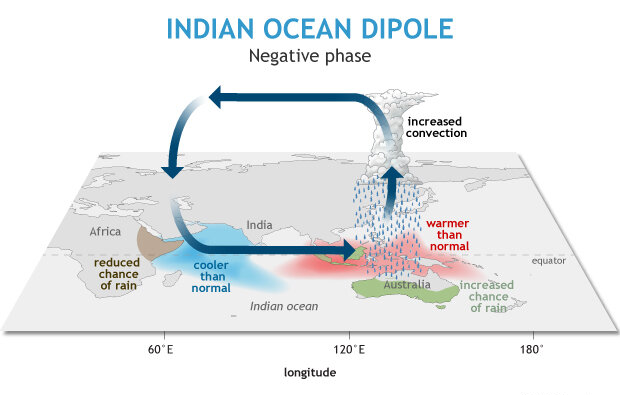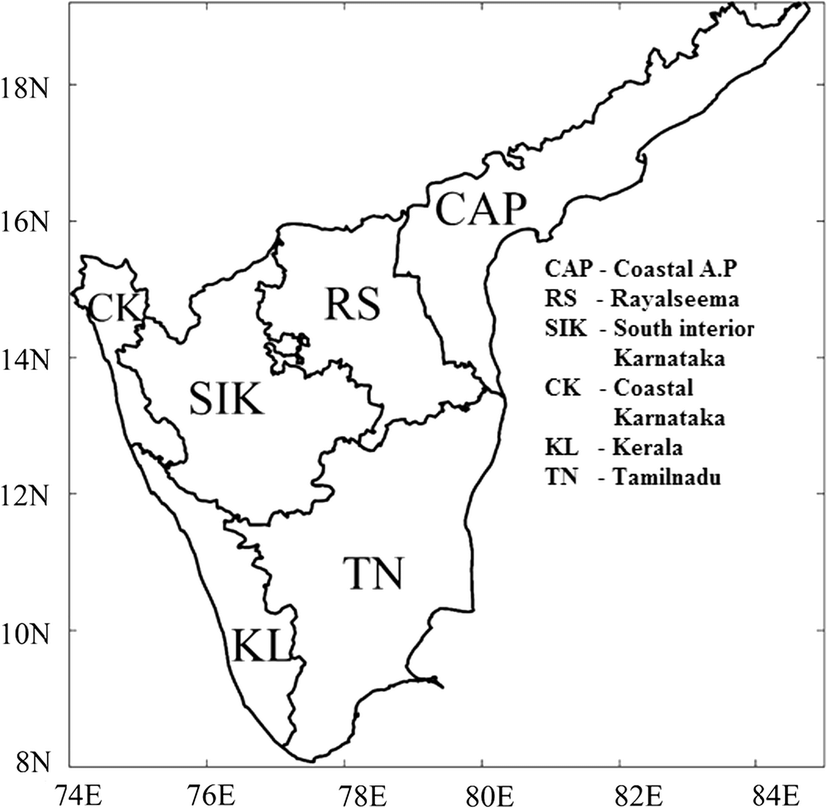Rainfall Deficiency in Southern Peninsular India | 07 Nov 2023
Why in News?
The India Meteorological Department (IMD) recent analysis regarding the rainfall patterns in Southern peninsular India, spanning 123 years of records, exposed that the region encountered its sixth driest October in its meteorological history.
What are the Major Factors Influencing Rainfall Deficiency in Southern Peninsular India ?
- About:
- The Southern Peninsular region encompassing Kerala, Mahe, South Interior Karnataka, Tamil Nadu, Karaikal, Puducherry, coastal Andhra Pradesh, Yanam and Rayalaseema received only 74.9mm of rain in October, which was over 60% below normal.
- Factors Influencing Rainfall Deficiency:
- Confluence of Northeast Monsoon and Cyclone Hamoon: The commencement of the northeast monsoon coincided with the genesis of Cyclone Hamoon, causing a diversion of moisture away from southern peninsular India.
- This altered wind flow patterns and weakened the onset of the northeast monsoon.
- El Nino and Indian Ocean Dipole (IOD): 2023 is an El Nino year combined with a positive phase of the Indian Ocean Dipole (IOD).
- Confluence of Northeast Monsoon and Cyclone Hamoon: The commencement of the northeast monsoon coincided with the genesis of Cyclone Hamoon, causing a diversion of moisture away from southern peninsular India.
- Cyclone Hamoon:
- It was a very severe tropical cyclone that made landfall in Bangladesh on 25th October, 2023.
- The cyclone formed from a low-pressure area over the west-central Bay of Bengal.
- It was named by Iran, and the word "Hamoon" is a Persian word that refers to inland desert lakes or marshlands.
- It was a very severe tropical cyclone that made landfall in Bangladesh on 25th October, 2023.
- El Nino:
- It is a natural phenomenon that involves a periodic warming of the surface waters in the equatorial Pacific Ocean.
- The word "El Niño" means "Little Boy" in Spanish.
- It is one of the two phases of a climate pattern called El Niño-Southern Oscillation (ENSO)
- Over India, it has the effect of suppressing the monsoon rainfall.
- It is a natural phenomenon that involves a periodic warming of the surface waters in the equatorial Pacific Ocean.
- Indian Ocean Dipole (IOD):
- The IOD is an atmosphere-ocean phenomenon that occurs in the Indian Ocean.
- It's characterized by a disparity in sea surface temperatures between the eastern and western Indian Oceans.
 |
 |
- India Meteorological Department:
- It was established in 1875.
- It is the National Meteorological Service of the country and the principal government agency in all matters relating to meteorology and allied subjects.
UPSC Civil Services Examination, Previous Year Question (PYQ)
Prelims
Q. With reference to ‘Indian Ocean Dipole (IOD)’ sometimes mentioned in the news while forecasting Indian monsoon, which of the following statements is/are correct? (2017)
- IOD phenomenon is characterized by a difference in sea surface temperature between tropical Western Indian Ocean and tropical Eastern Pacific Ocean.
- An IOD phenomenon can influence an El Nino’s impact on the monsoon.
Select the correct answer using the code given below:
(a) 1 only
(b) 2 only
(c) Both 1 and 2
(d) Neither 1 nor 2
Ans: (b)

